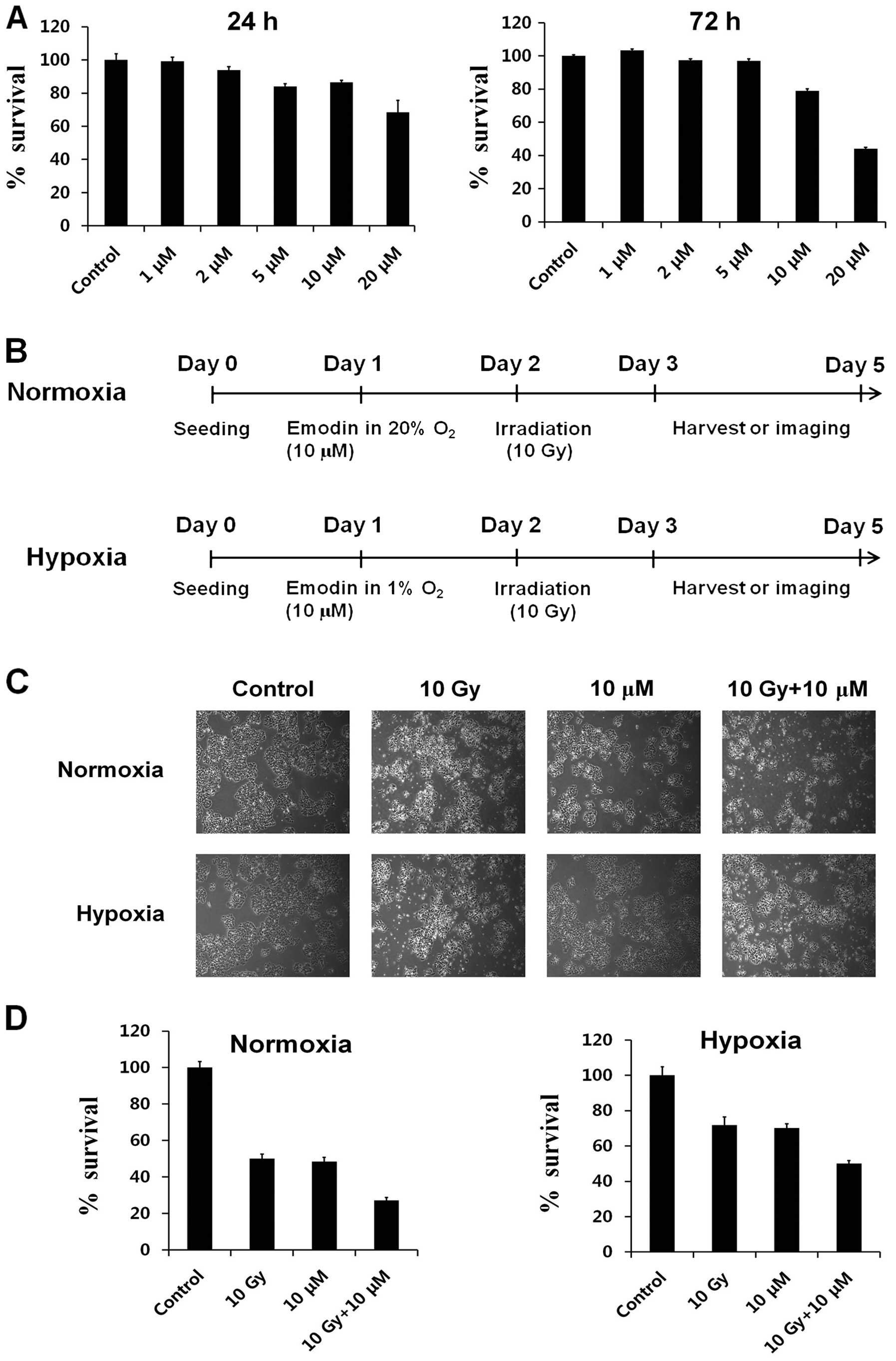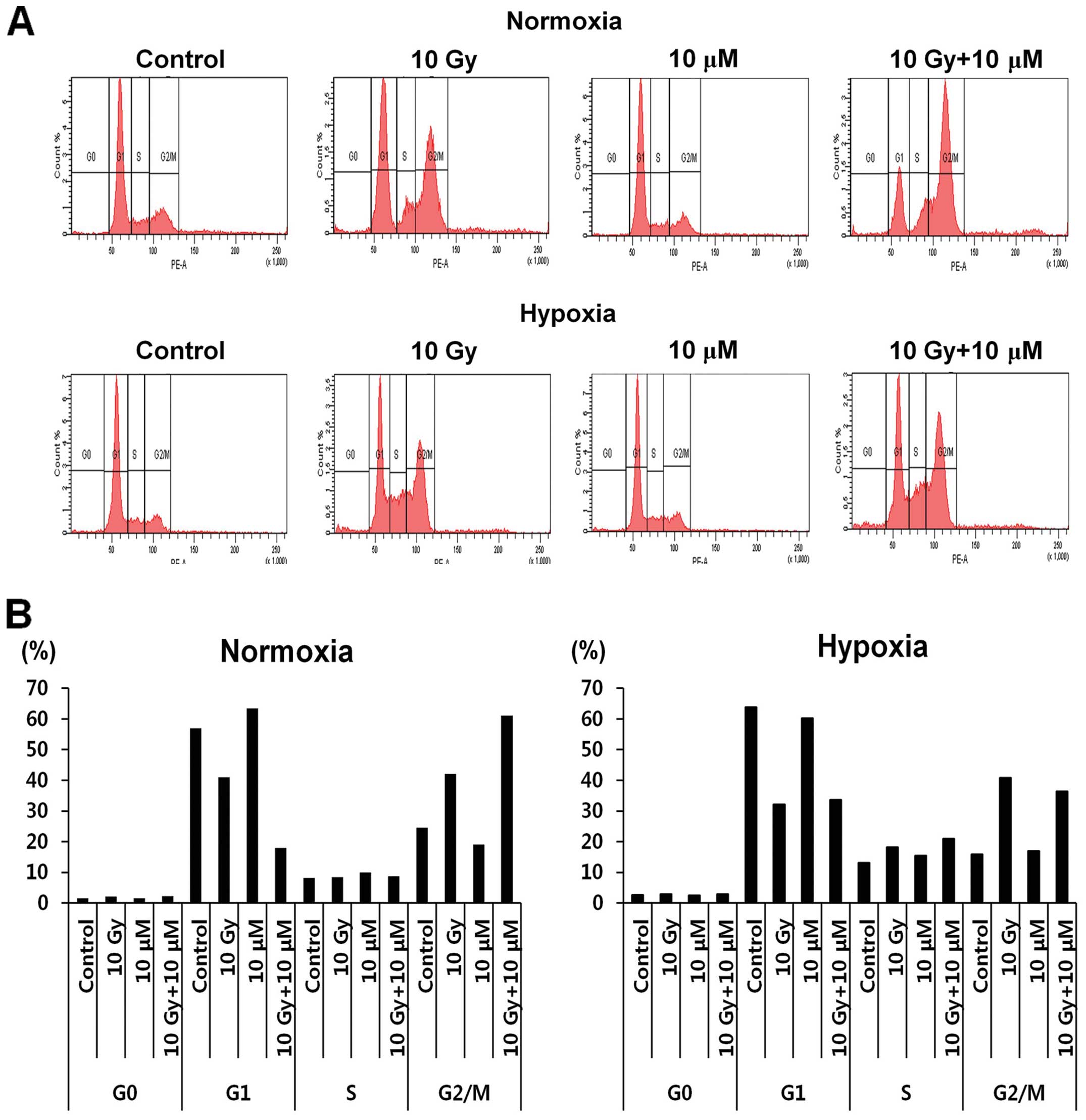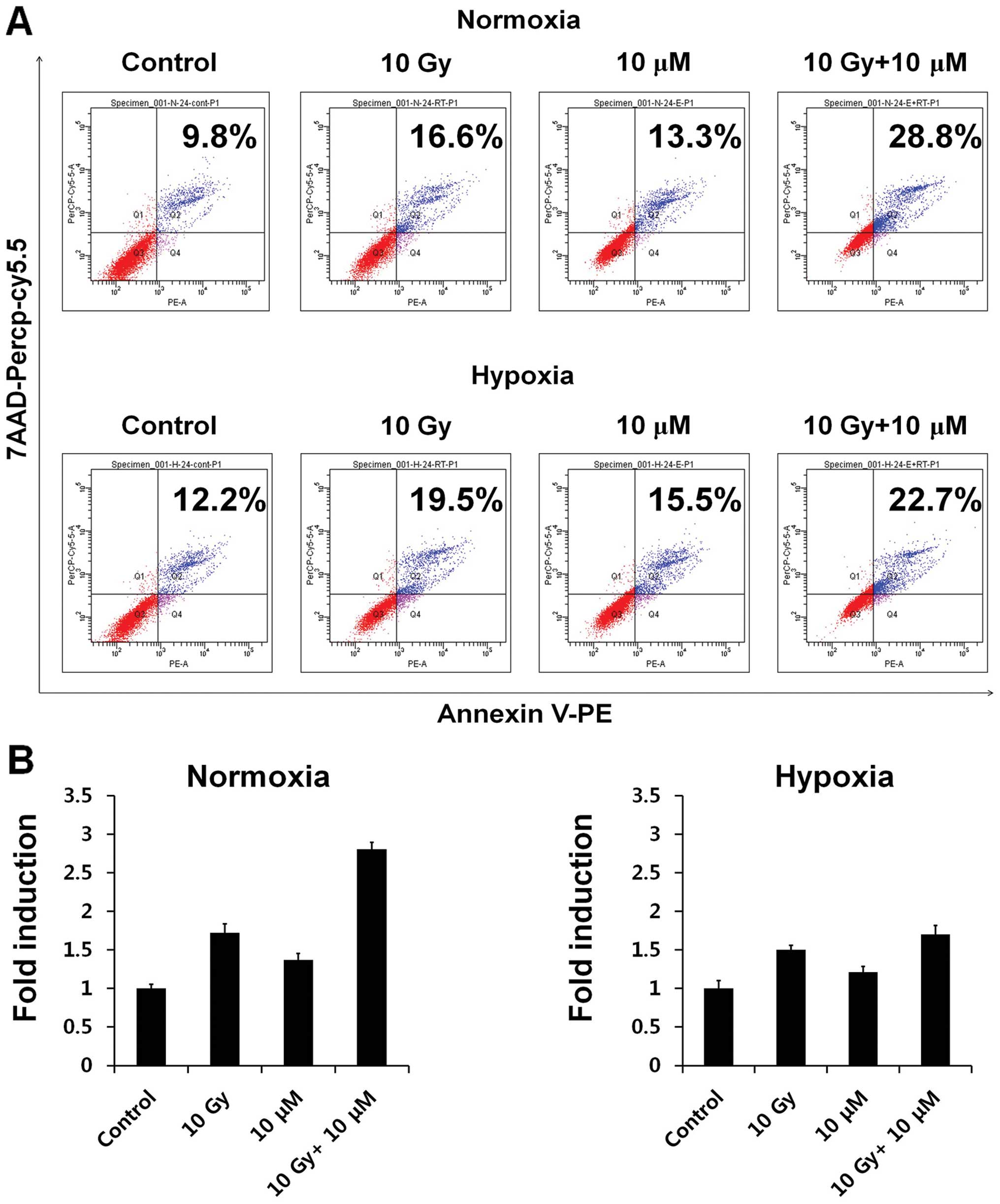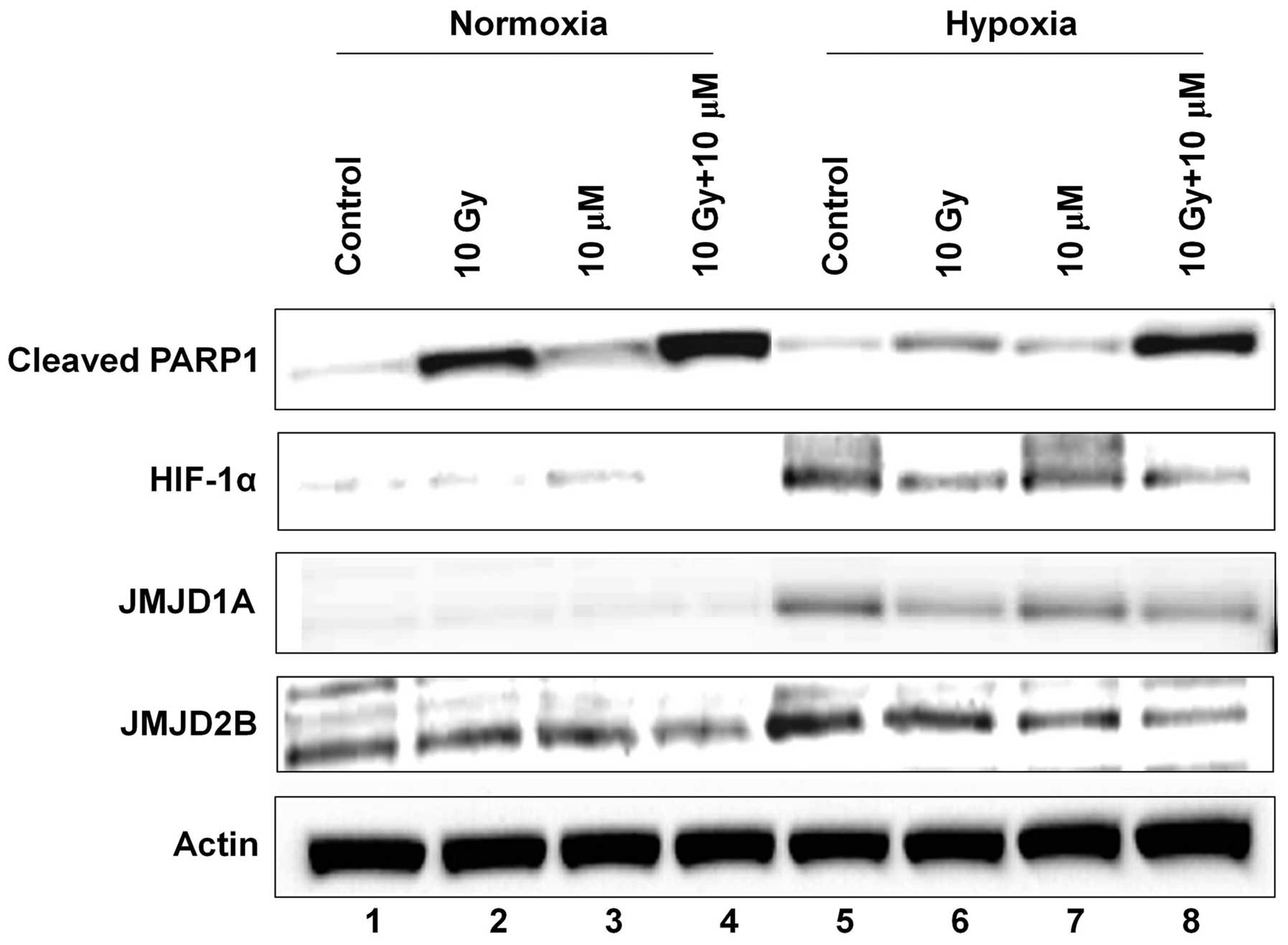|
1
|
Bruix J and Sherman M: Management of
hepatocellular carcinoma. Hepatology. 42:1208–1236. 2005.
View Article : Google Scholar : PubMed/NCBI
|
|
2
|
Lee IJ and Seong J: Radiotherapeutic
strategies in the management of hepatocellular carcinoma. Oncology.
81(Suppl 1): 123–133. 2011. View Article : Google Scholar
|
|
3
|
Ursino S, Greco C, Cartei F, et al:
Radiotherapy and hepatocellular carcinoma: update and review of the
literature. Eur Rev Med Pharmacol Sci. 16:1599–1604.
2012.PubMed/NCBI
|
|
4
|
Feng M and Ben-Josef E: Radiation therapy
for hepatocellular carcinoma. Semin Radiat Oncol. 21:271–277. 2011.
View Article : Google Scholar : PubMed/NCBI
|
|
5
|
Kang JK, Kim MS, Cho CK, et al:
Stereotactic body radiation therapy for inoperable hepatocellular
carcinoma as a local salvage treatment after incomplete
transarterial chemoembolization. Cancer. 118:5424–5431. 2012.
View Article : Google Scholar : PubMed/NCBI
|
|
6
|
Meng MB, Cui YL, Lu Y, et al:
Transcatheter arterial chemo-embolization in combination with
radiotherapy for unresectable hepatocellular carcinoma: a
systematic review and meta-analysis. Radiother Oncol. 92:184–194.
2009. View Article : Google Scholar
|
|
7
|
Deorukhkar A and Krishnan S: Targeting
inflammatory pathways for tumor radiosensitization. Biochem
Pharmacol. 80:1904–1914. 2010. View Article : Google Scholar : PubMed/NCBI
|
|
8
|
Stea B and Gordon J: Clinically relevant
biomarkers in targeted radiotherapy. Clin Exp Metastasis.
29:853–860. 2012. View Article : Google Scholar : PubMed/NCBI
|
|
9
|
Meijer TW, Kaanders JH, Span PN and
Bussink J: Targeting hypoxia, HIF-1, and tumor glucose metabolism
to improve radiotherapy efficacy. Clin Cancer Res. 18:5585–5594.
2012. View Article : Google Scholar : PubMed/NCBI
|
|
10
|
Lu HF, Lai KC, Hsu SC, et al: Involvement
of matrix metallo-proteinases on the inhibition of cells invasion
and migration by emodin in human neuroblastoma SH-SY5Y cells.
Neurochem Res. 34:1575–1583. 2009. View Article : Google Scholar : PubMed/NCBI
|
|
11
|
Wei WT, Lin SZ, Liu DL and Wang ZH: The
distinct mechanisms of the antitumor activity of emodin in
different types of cancer (Review). Oncol Rep. 30:2555–2562.
2013.PubMed/NCBI
|
|
12
|
Hsu CM, Hsu YA, Tsai Y, et al: Emodin
inhibits the growth of hepatoma cells: finding the common
anti-cancer pathway using Huh7, Hep3B, and HepG2 cells. Biochem
Biophys Res Commun. 392:473–478. 2010. View Article : Google Scholar
|
|
13
|
Shieh DE, Chen YY, Yen MH, Chiang LC and
Lin CC: Emodin-induced apoptosis through p53-dependent pathway in
human hepatoma cells. Life Sci. 74:2279–2290. 2004. View Article : Google Scholar : PubMed/NCBI
|
|
14
|
Park SC, Yoon JH, Lee JH, et al:
Hypoxia-inducible adrenomedullin accelerates hepatocellular
carcinoma cell growth. Cancer Lett. 271:314–322. 2008. View Article : Google Scholar : PubMed/NCBI
|
|
15
|
Huang XZ, Wang J, Huang C, et al: Emodin
enhances cyto-toxicity of chemotherapeutic drugs in prostate cancer
cells: the mechanisms involve ROS-mediated suppression of multidrug
resistance and hypoxia inducible factor-1. Cancer Biol Ther.
7:468–475. 2008. View Article : Google Scholar : PubMed/NCBI
|
|
16
|
Park SJ, Kim JG, Son TG, et al: The
histone demethylase JMJD1A regulates adrenomedullin-mediated cell
proliferation in hepatocellular carcinoma under hypoxia. Biochem
Biophys Res Commun. 434:722–727. 2013. View Article : Google Scholar : PubMed/NCBI
|
|
17
|
Kim JG, Yi JM, Park SJ, et al: Histone
demethylase JMJD2B-mediated cell proliferation regulated by hypoxia
and radiation in gastric cancer cell. Biochim Biophys Acta.
1819:1200–1207. 2012. View Article : Google Scholar : PubMed/NCBI
|
|
18
|
Schwarz RE and Smith DD: Trends in local
therapy for hepatocellular carcinoma and survival outcomes in the
US population. Am J Surg. 195:829–836. 2008. View Article : Google Scholar : PubMed/NCBI
|
|
19
|
Cochrane AM, Murray-Lyon IM, Brinkley DM
and Williams R: Quadruple chemotherapy versus radiotherapy in
treatment of primary hepatocellular carcinoma. Cancer. 40:609–614.
1977. View Article : Google Scholar : PubMed/NCBI
|
|
20
|
Ingold JA, Reed GB, Kaplan HS and Bagshaw
MA: Radiation Hepatitis. Am J Roentgenol Radium Ther Nucl Med.
93:200–208. 1965.PubMed/NCBI
|
|
21
|
Robertson JM, McGinn CJ, Walker S, et al:
A phase I trial of hepatic arterial bromodeoxyuridine and conformal
radiation therapy for patients with primary hepatobiliary cancers
or colorectal liver metastases. Int J Radiat Oncol Biol Phys.
39:1087–1092. 1997. View Article : Google Scholar : PubMed/NCBI
|
|
22
|
Seong J, Keum KC, Han KH, et al: Combined
transcatheter arterial chemoembolization and local radiotherapy of
unresectable hepatocellular carcinoma. Int J Radiat Oncol Biol
Phys. 43:393–397. 1999. View Article : Google Scholar : PubMed/NCBI
|
|
23
|
Shim SJ, Seong J, Han KH, Chon CY, Suh CO
and Lee JT: Local radiotherapy as a complement to incomplete
transcatheter arterial chemoembolization in locally advanced
hepatocellular carcinoma. Liver Int. 25:1189–1196. 2005. View Article : Google Scholar : PubMed/NCBI
|
|
24
|
Park W, Lim DH, Paik SW, et al: Local
radiotherapy for patients with unresectable hepatocellular
carcinoma. Int J Radiat Oncol Biol Phys. 61:1143–1150. 2005.
View Article : Google Scholar : PubMed/NCBI
|
|
25
|
Shin YJ, Kim MS, Yoo SY, et al: Pilot
study of stereotactic body radiotherapy for huge hepatocellular
carcinoma unsuitable for other therapies. Tumori. 96:65–70.
2010.PubMed/NCBI
|
|
26
|
Seo YS, Kim MS, Yoo SY, et al: Preliminary
result of stereotactic body radiotherapy as a local salvage
treatment for inoperable hepatocellular carcinoma. J Surg Oncol.
102:209–214. 2010. View Article : Google Scholar : PubMed/NCBI
|
|
27
|
Dawson LA: Overview: Where does radiation
therapy fit in the spectrum of liver cancer local-regional
therapies? Semin Radiat Oncol. 21:241–246. 2011. View Article : Google Scholar : PubMed/NCBI
|
|
28
|
Veuger SJ, Hunter JE and Durkacz BW:
Ionizingradiation-induced NF-kappaB activation requires PARP-1
function to confer radioresistance. Oncogene. 28:832–842. 2009.
View Article : Google Scholar :
|
|
29
|
Shimura T, Kakuda S, Ochiai Y, et al:
Acquired radioresistance of human tumor cells by
DNA-PK/AKT/GSK3beta-mediated cyclin D1 overexpression. Oncogene.
29:4826–4837. 2010. View Article : Google Scholar : PubMed/NCBI
|
|
30
|
Chao Y, Li CP, Chau GY, et al: Prognostic
significance of vascular endothelial growth factor, basic
fibroblast growth factor, and angiogenin in patients with
resectable hepatocellular carcinoma after surgery. Ann Surg Oncol.
10:355–362. 2003. View Article : Google Scholar : PubMed/NCBI
|
|
31
|
Jeng KS, Sheen IS, Wang YC, et al:
Prognostic significance of preoperative circulating vascular
endothelial growth factor messenger RNA expression in resectable
hepatocellular carcinoma: a prospective study. World J
Gastroenterol. 10:643–648. 2004.PubMed/NCBI
|
|
32
|
Poon RT, Ho JW, Tong CS, Lau C, Ng IO and
Fan ST: Prognostic significance of serum vascular endothelial
growth factor and endostatin in patients with hepatocellular
carcinoma. Br J Surg. 91:1354–1360. 2004. View Article : Google Scholar : PubMed/NCBI
|
|
33
|
Shim JH, Park JW, Kim JH, et al:
Association between increment of serum VEGF level and prognosis
after transcatheter arterial chemoembolization in hepatocellular
carcinoma patients. Cancer Sci. 99:2037–2044. 2008.PubMed/NCBI
|
|
34
|
Yang W, Sun T, Cao J and Fan S:
Hypoxia-inducible factor-1α downregulation by small interfering RNA
inhibits proliferation, induces apoptosis, and enhances
radiosensitivity in chemical hypoxic human hepatoma SMMC-7721
cells. Cancer Biother Radiopharm. 26:565–571. 2011. View Article : Google Scholar : PubMed/NCBI
|
|
35
|
Yamada D, Kobayashi S, Yamamoto H, et al:
Role of the hypoxia-related gene, JMJD1A, in hepatocellular
carcinoma: clinical impact on recurrence after hepatic resection.
Ann Surg Oncol. 19(Suppl 3): 355–364. 2012. View Article : Google Scholar
|
|
36
|
Krieg AJ, Rankin EB, Chan D, Razorenova O,
Fernandez S and Giaccia AJ: Regulation of the histone demethylase
JMJD1A by hypoxia-inducible factor 1 alpha enhances hypoxic gene
expression and tumor growth. Mol Cell Biol. 30:344–353. 2010.
View Article : Google Scholar
|
|
37
|
Andersen DO, Weber ND, Wood SG, Hughes BG,
Murray BK and North JA: In vitro virucidal activity of selected
anthraquinones and anthraquinone derivatives. Antiviral Res.
16:185–196. 1991. View Article : Google Scholar : PubMed/NCBI
|
|
38
|
Arosio B, Gagliano N, Fusaro LM, et al:
Aloe-emodin quinone pretreatment reduces acute liver injury induced
by carbon tetra-chloride. Pharmacol Toxicol. 87:229–233. 2000.
View Article : Google Scholar : PubMed/NCBI
|
|
39
|
Krumbiegel G and Schulz HU: Rhein and
aloe-emodin kinetics from senna laxatives in man. Pharmacology.
47(Suppl 1): 120–124. 1993. View Article : Google Scholar : PubMed/NCBI
|
|
40
|
Srinivas G, Babykutty S, Sathiadevan PP
and Srinivas P: Molecular mechanism of emodin action: transition
from laxative ingredient to an antitumor agent. Med Res Rev.
27:591–608. 2007. View Article : Google Scholar
|
|
41
|
Srinivas G, Anto RJ, Srinivas P,
Vidhyalakshmi S, Senan VP and Karunagaran D: Emodin induces
apoptosis of human cervical cancer cells through poly(ADP-ribose)
polymerase cleavage and activation of caspase-9. Eur J Pharmacol.
473:117–125. 2003. View Article : Google Scholar : PubMed/NCBI
|
|
42
|
Lee KB, Kim KR, Huh TL and Lee YM: Proton
induces apoptosis of hypoxic tumor cells by the p53-dependent and
p38/JNK MAPK signaling pathways. Int J Oncol. 33:1247–1256.
2008.PubMed/NCBI
|
|
43
|
Hennessey D, Martin LM, Atzberger A, Lynch
TH, Hollywood D and Marignol L: Exposure to hypoxia following
irradiation increases radioresistance in prostate cancer cells.
Urol Oncol. 31:1106–1116. 2013. View Article : Google Scholar
|
|
44
|
Wang M, Li X, Qu Y, Xu O and Sun Q:
Hypoxia promotes radio-resistance of CD133-positive Hep-2 human
laryngeal squamous carcinoma cells in vitro. Int J Oncol.
43:131–140. 2013.PubMed/NCBI
|













